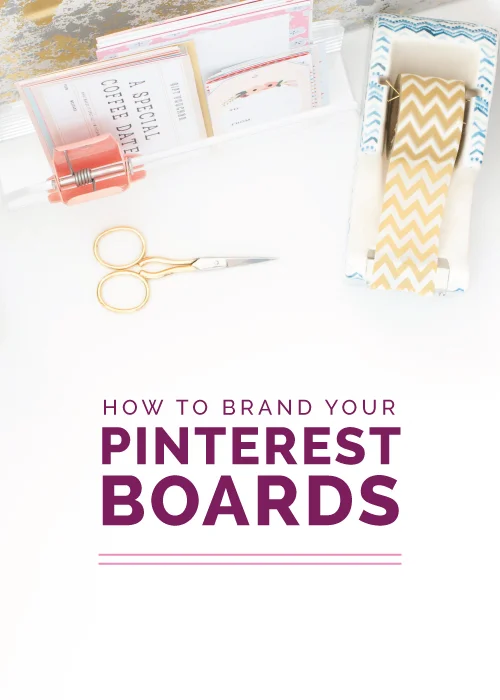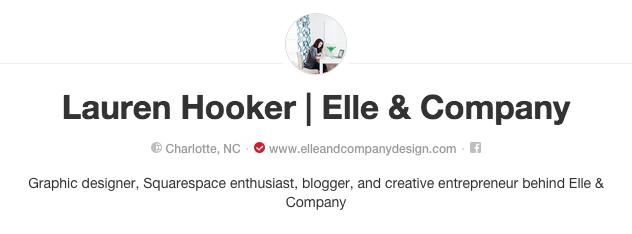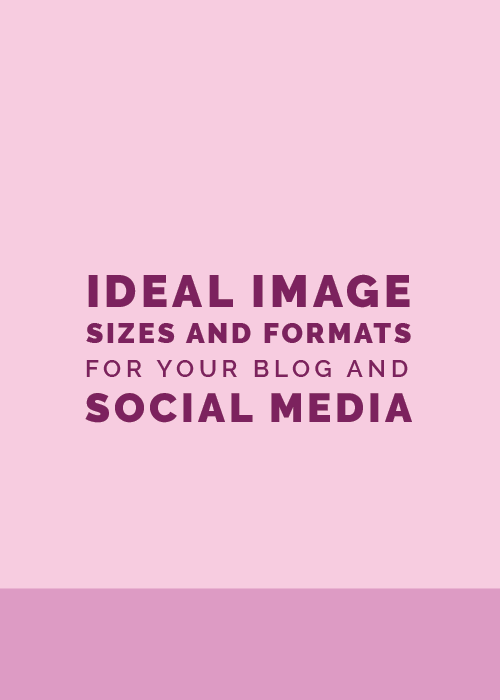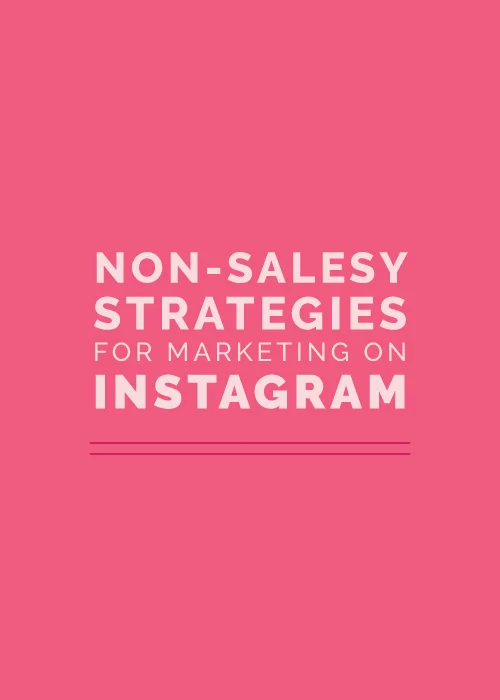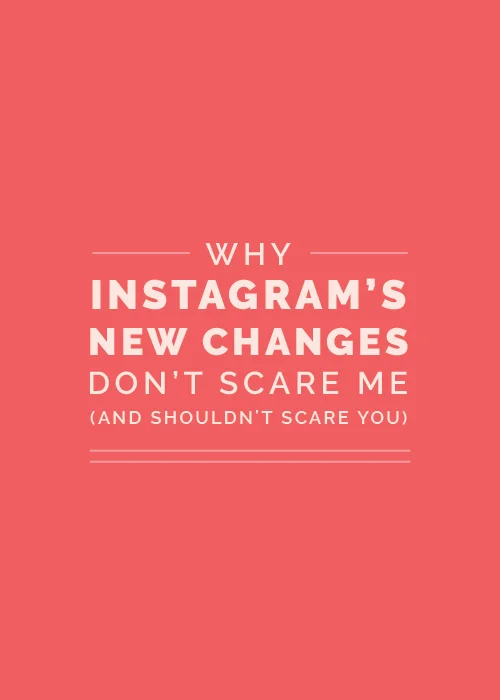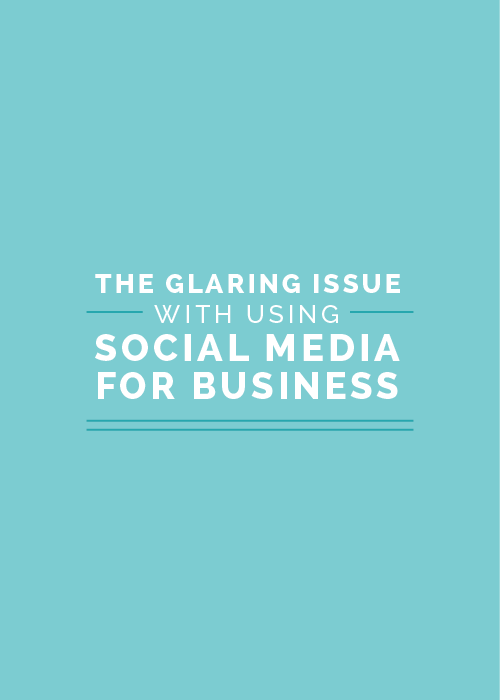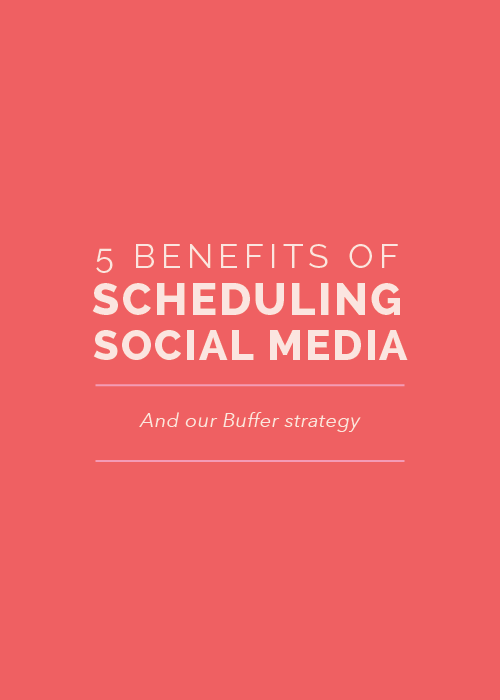Curating images is a crucial part of branding that’s always noticed but not often considered (and by curating, I’m referring to exercising intention in the way images are laid out and organized within a group, like a Pinterest board, Instagram account, or even a blog archive). All of your images are a reflection of your brand as a whole, and putting thoughtful consideration into how these images are grouped and displayed can go a long way in making your blog or business appear professional and legitimate, especially across your social media accounts.
We’re all very visual, and we appreciate well-curated groups of images. But the trouble isn’t recognizing streamlined accounts and brands; it’s figuring out how to take our accounts to the next level and curate our images to reflect well on our blog or business.
And that’s where today’s post comes in.
After I shared last month’s post on how to utilize Pinterest to grow your blog audience, I received several questions on how to organize boards and develop a consistent style within a Pinterest account. And while I truly think that you can benefit most from Pinterest by providing content that your readers want to pin from your site, I do think having professional, consistent boards encourages others to follow along with you and take your brand seriously. Every social media account is a reflection of your brand, and the content you share has the potential to take it to the next level.
Here are a few helpful ways to brand your Pinterest account.
1 | Determine your type of account
When it comes to social media, there’s always a great debate about whether to combine your business and personal accounts or keep them separate. It’s important to consider this before moving onto the next few insights, because it will largely determine what you’re pinning and showcasing within your boards.
For Elle & Company, I choose to combine my business and personal accounts on Pinterest, Instagram, and Twitter. While I want my brand to appear professional, there’s a personable, relatable part of the brand that's further emphasized by giving my audience a look into the day-to-day activities. This means that on Pinterest, I have a couple boards that are a little more personal, like my Food & Sweets board and my What to Wear board. Do they have anything to do with Elle & Company? Not directly, but if you keep reading I’ll tell you how I’m able to incorporate them into my account regardless.
I also choose to consolidate my personal and business accounts on social media to drive more traffic to my website. It’s harder to direct your audience to your site when your content is spread out over multiple accounts.
Whatever you decide to do, put thought and intention into the “why” behind it. Consider how it will affect your brand if you decide to combine your account to include both business and personal pins.
2 | Consider your profile
It may be just a headshot, a name, a short descriptive sentence, and a link, but it’s important to consider each detail of your profile as you brand your Pinterest account.
For your headshot, make it consistent with your other social media accounts to increase recognizability and maintain consistency.
For your name, consider how people might search for you on Pinterest. Because my personal and business accounts are combined, I choose to use both “Lauren Hooker” and “Elle & Company” within my account name on Pinterest. If someone searches for either of those names, they will be able to find me.
For your description, outline what it is that you do. For me, the most important information that people need to know about my business is that I’m a creative entrepreneur, blogger, and designer who mainly works with Squarespace. And because my audience is made up of bloggers and creative entrepreneurs, I want to highlight the things that I have in common with them within my profile in order to appeal to them.
For the link, it’s important that the link is verified (which is what that red checkmark icon signifies). By taking a couple minutes to verify your site, you’re reassuring other pinners that your site is legitimate and safe.
3 | Create relevant boards
You have plenty of opportunity to enhance your brand and hone in on your areas of expertise through the content you include within your boards. Whether you’re a designer, food blogger, photographer, calligrapher, nutritionist, writer, etc., you should be showcasing your areas of expertise through your boards by creating relevant categories.
For example, because Elle & Company is focused on design, blogging, and business, I created boards that highlight my areas of expertise: Lovely Branding, Blogging & Business, Pen & Ink, Pattern & Print, Photo Styling, Fine Art, and even Office Space. Not only am I able to pin my own work and blog posts to these boards, but I’m able to show my eye for good design and business resources by pinning other images to these boards.
Creating boards for blog series is another clever way to maintain brand consistency in your Pinterest account. I have one board that’s a general collection of all of my posts, infographics, and design work, but I also have a board for Weekly Truth (an old blog series that’s still pinned from today) and Elle & Company Brands.
You should also consider the names of your boards and use terms that are consistent with the tone of your brand.
If you already have an existing account and you aren’t starting from scratch, consider going through your boards and weeding out collections that aren’t relevant to your brand. If you don’t want to get rid of them completely, you can take advantage of Pinterest’s secret board option and simply go in and change the board’s privacy settings.
4 | Develop an image style
This might sound a little cynical, but it’s important to refrain from pinning ugly images. There are many pins out there that are helpful but less-than-attractive, and they can easily be pinned to a secret board. But when you’re showcasing your brand on social media, even if it’s through other people’s pins, the visual appearance of your account can go a long way.
It’s important to consider the image style that you’ve used for your own brand and website when you’re determining an image style for your Pinterest boards. You should try to keep them consistent, and that comes from weighing the images against your mission statement. This is a way that you can continue to pin to boards like House & Home or Food & Sweets and maintain brand consistency - colors, light, subject matter, and composition all contribute to an visual style for your images.
For example, Elle & Company images are light, bright, and simple to reflect a positive, professional, and relatable brand. When I’m pinning images to my Pinterest boards, I always make sure that the images reflect those characteristics, too. I’ll admit that I can be a little type-A and selective when it comes to what I pin, but it’s resulted in boards that reflect the Elle & Company aesthetic.
5 | Curate your boards
Pinterest allows you to pick and choose which images appear on the preview of your boards. Take some time to curate and organize your boards so that they're visually appealing as a collection. Vary the colors, choose images that crop well, and place your most relevant, popular boards toward the top of the page.
6 | Pin from your site on a regular basis
One of the biggest advantages of using Pinterest for blogging and business is the ability to drive traffic back to your site. Each time you publish a post, make a habit of pinning it to your account. If you come out with a new product launch or offering, pin it to your account. If your work is featured on someone else's website, pin it to your account. Filling your boards with pins from your site is one of the strongest ways that you can reflect your brand within your Pinterest account.
The content you share on social media is a reflection of your brand, whether you're intentional about it or not. By branding your Pinterest boards and maintaining consistency across your pins and boards, you have the ability to make your blog and business appear more professional, increase recognition among your audience, and build a stronger visual presence across platforms.
How have you branded your Pinterest boards?

